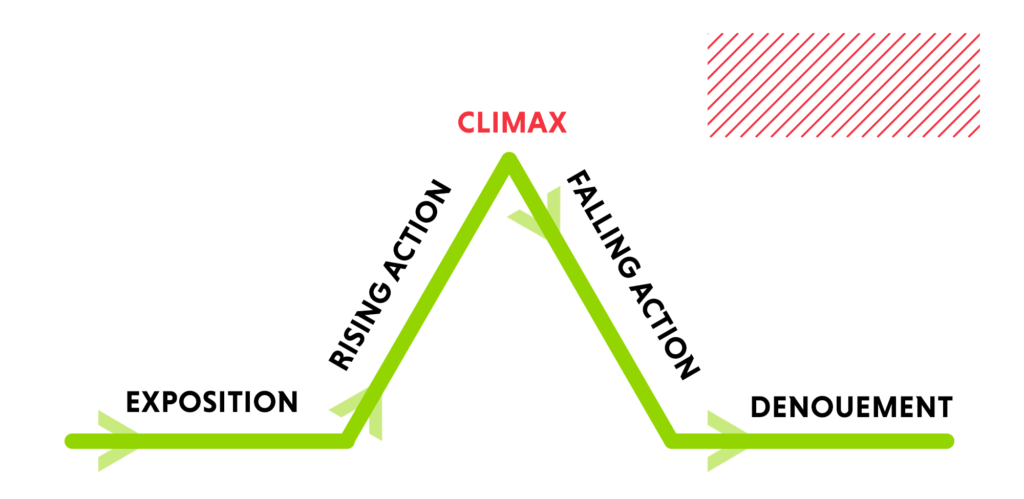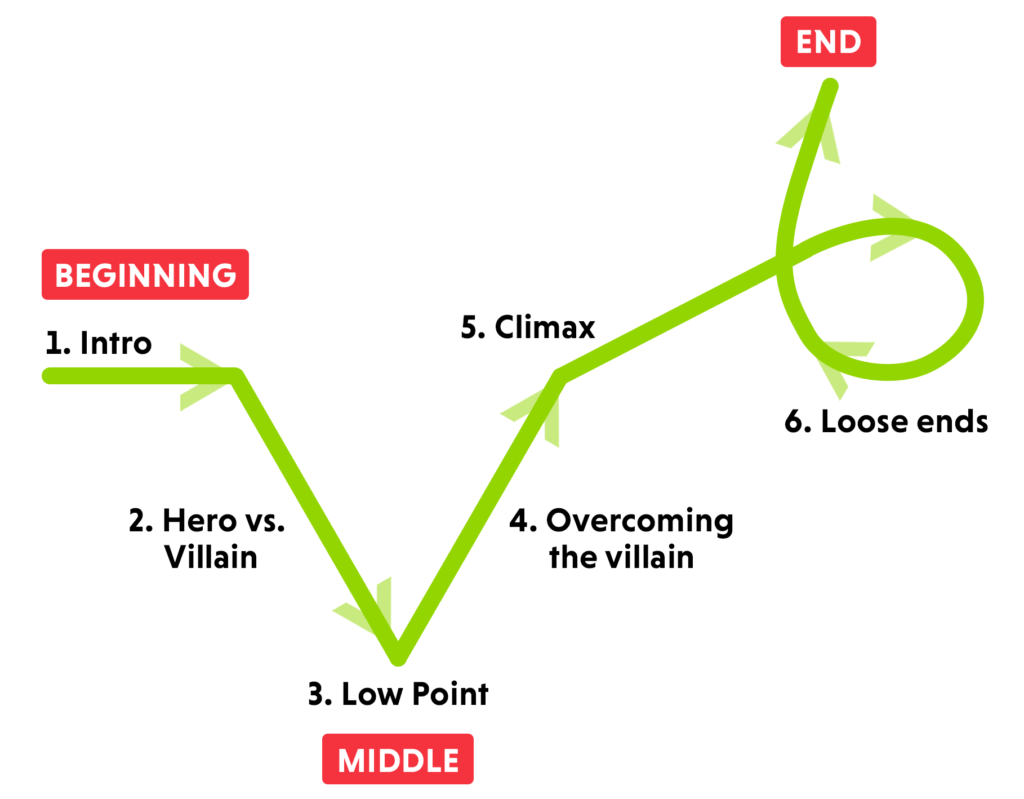Storytelling: It’s part of what makes us human and is fundamental to who we are. For the nonprofit sector, storytelling has the power to get people excited about a particular organization and ultimately buy into its mission.
I recently presented the Storytelling for IMPACT webinar to the Institute for Nonprofit Innovation and Excellence, the Council On Culture & Arts, and United Partners For Human Services. While you are welcome to watch this nonprofit storytelling webinar in its entirety, I’ve summarized the key points below for your convenience.
Why are Stories So Powerful for Nonprofits?
Researchers believe we’re evolutionarily hardwired to respond to stories, and we evolved the way we did because storytelling allows us to experience things and problem-solve as a group … without actually having to live through that experience firsthand.
Stories are “sticky” – we remember them. According to a London Business School study, retention rates vary based on how the information is presented, with storytelling increasing retention by as much as 70%.
A well-told story is fundamentally memorable because it makes us feel. Maya Angelou famously said that people will forget what you said, they’ll forget what you did, but they’ll never forget how you made them feel. And stories make us feel things.
Stories can move us to action. Whether it’s to vote a certain way, to become a brand loyalist, or to donate your money or time, stories with strong emotional engagement, a clear rationale, and a sense of urgency can drive us to take desired actions.
Elements of Nonprofit Storytelling
While every story is different, they all follow a predictable pattern. Let’s take a look at some common approaches to storytelling.
The Nonprofit Story Arc
Every news story, every movie, every fictional book is formed around a story arc. Why? Because this is what humans crave in a story. They don’t want ambiguity or complexity … they want a hero, they want to relate to a problem, they want a dramatic climax, and then they want the problem resolved.
The story arc has withstood the test of time, used throughout history and across various cultures – Hindu scripture, coyote stories of the Navajo Nation, classic Greek plays, Shakespeare, and Pixar movies, just to name a few. And it can work for nonprofits as well.
How to apply the nonprofit story arc:
- Find a relatable protagonist – someone to understand and root for, someone who people want to succeed by the end of the story.
- Set a clear goal with an understandable motive.
- Establish obstacles that create risk and struggle.
- End with a resolution. This is where nonprofits have an opportunity to connect their mission to the protagonist’s story and transformation.
The Story Spine
The story spine can help you build out the framework of your story, and includes the following components: Once upon a time … Every day … One day because of that … Because of that … Until finally … And ever since then …
Here’s an example:
Once upon a time, there was a girl living in a remote part of Tanzania that is beautiful but impoverished. Because her parents died, she and her sister had to live with their grandmother. Every day, she had to look after her sister so her grandmother could earn money to feed them. So even though she was smart, she never completed primary school.
One day, she found her way to the City of Hope, a school for underprivileged children. Because of that, she learned how to sew – and because of that, she was able to support herself and her sister.
Until finally she was able to start her own business using traditional African textiles. And ever since then, she’s been able to sustain herself and her sister, and teach other girls to sustain themselves by learning how to sew.
How to apply the story spine:
- Find a protagonist who is sympathetic and relatable.
- Identify a “villain” – which could be poverty or homelessness, drug addiction, racial injustice, or other societal challenges.
- Present the problem or dilemma that the protagonist must overcome.
- Identify how your organization helps the protagonist overcome this problem or dilemma. What is the resolution? How is their life improved because of your organization?
The V-Shaped Storytelling Formula
In 2013, Dallas Morning News columnist David Lieber presented a humorous but insightful TED talk about the power of storytelling to change the world. He reduced it down to what he calls the “Magic V-Shaped Storytelling Formula.”
This formula is especially helpful on social media when you need to develop an entire storyline in a brief minute or two.
How to apply the V-Shaped Storytelling Formula:
- Introduce the character and make people care about them.
- Bring the story to its lowest point.
- Turn it around and finish with a happy ending.
Tips for Effective Nonprofit Storytelling
Make Your Nonprofit’s Stories Visual
One way to optimize the effectiveness of your nonprofit’s story is to make it visual. A story is going to be much more likely to drive people to take action if you have strong visuals to go with it.
Infographics
Infographics can break through the clutter by packaging your information in a way that people can easily scan and then decide if they’re hungry for more. In fact, articles featuring infographics receive 72% more views than text-only articles.
Video
Video is the most consumed content on the web, with online videos anticipated to make up more than 82% of all consumer internet traffic by 2022.
Transform static infographics, B-roll footage, and stock photography into engaging video content that can be shared and easily digested on social media or your website.
Use Facebook and Instagram LIVE to share behind-the-scenes storytelling of your organization and its impact or to announce important news about your organization.
Be sure to weave branded elements into your video content when it makes sense to boost brand recognition. There are several online platforms available that allow you to create simple yet professional-looking videos without a large production budget.
Crowdsource Content
One economical way to obtain video content is to crowdsource it. Everyone now carries an extraordinarily powerful device that allows them to be a photographer or videographer – their smartphone. Open it up to your nonprofit’s members, stakeholders, and the people that you help share their stories, so you can get golden content without busting your budget.
Grab People’s Attention … Fast
The average human attention span is just eight seconds, one second slower than that of a goldfish. So you have to hook your viewers within the first few seconds … or you lose them. Facebook’s most popular videos are under two minutes; on YouTube, they can be a bit longer, with most top performers ranging from 4-10 minutes.
Add the Human Element
When you can put a human face in front of your cause and show who it impacts, people are much more inclined to buy into your mission.
The Humans of New York campaign, started in 2010 by photographer Brandon Stanton, is a tremendous example of the power of a human face for storytelling.
Stanton used this platform to tell the stories of pediatric cancer patients at Memorial Sloan Kettering Cancer Center, as well as the stories of doctors, nurses, and researchers on the brink of finding a cure. In just three weeks, the social media storytelling campaign raised $3.8 million from over 100,000 donors.
Empower Staff and Supporters to Become Storytellers
Sharing stories regularly with your staff, donors, and members can encourage them to do the same, and as a result, expand your organization’s visibility. By understanding the why and the how of storytelling, you can also create storytellers among your staff and turn the entire organization into a storytelling operation.
How to Use Nonprofit Storytelling to Achieve Measurable Goals
First things first … As you develop your storytelling strategy, it’s important to determine your goals and how you’re going to measure success.
Do you want to use storytelling for fundraising and development purposes, to increase traffic to your website, to boost social media visibility and engagement, or to grow membership?
Knowing clearly at the front end how you’re going to measure success will give you a chance to see what stories and platforms are most effective, and this understanding can inform your strategy moving forward.
Here are some common forms of storytelling communication you can use to help your organization accomplish its goals:
Ready to tell your nonprofit story? We can help! Contact us today to get started.



